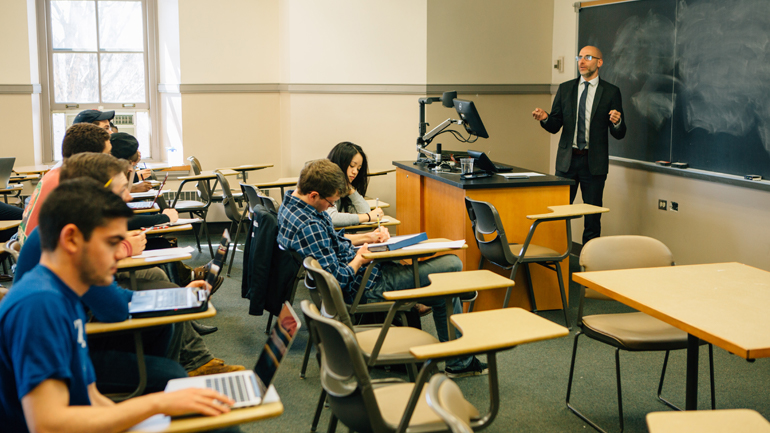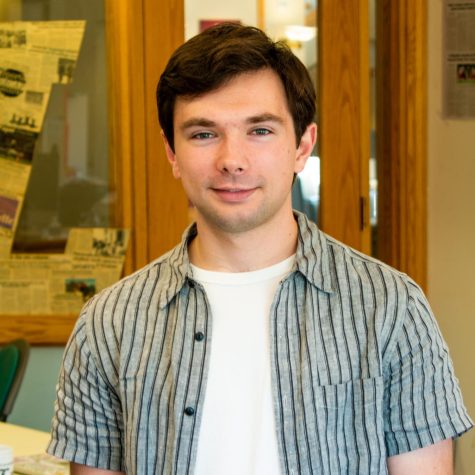As more than 2000 students have returned to campus life on College Hill, many of the courses for the spring semester at Lafayette remain online. The decision to hold either in-person or virtual classes was made by individual faculty members in conversation with their departments, according to Provost John Meier.
“The goal in building the spring schedule was to provide Lafayette students with the best educational experience possible,” he wrote in an email. “The conversations that were occurring at the department or program level were all student-focused, thoughtful, and often quite creative.”
Professors explained that their decision on their mode of instruction often came down to what best accommodated students.
Marshall R. Metzgar Professor and acting head of the chemistry department Chip Nataro described how his department offered a wide range of options for students.
“There are some in-person lectures and some remote, especially in classes like general chemistry II and organic chemistry II, where there are multiple sections. We had a mix of in-person and remote lecture sections just to try and accommodate as many different people as possible,” he said.
In cases where classes were mixed between students learning virtually and those on campus, as was the case with Nataro’s class, virtual learning usually prevailed.
“The mode of instruction where some students are in-person and masked and others are home logging in via Zoom, the ‘HyFlex’ model, is incredibly difficult to make successful for all students,” Meier explained. “In some instances, courses like that were moved to remote instruction.”
For associate professor of psychology John S. Shaw III, who is teaching his 52 student Introduction to Psychology class in-person, teaching face-to-face was of the utmost importance.
“Although all of the faculty and students at Lafayette have done an exceptional job in adjusting to and coping with remote learning during the COVID-19 pandemic, in my opinion there is no substitute for face-to-face teaching,” he wrote in an email. “It is much easier for me to interact with students when they are in a real classroom than when they are in a virtual one. As long as it is safe for me and the students, I much prefer teaching in person.”
When making the decision on what type of class to hold, there was also the consideration about the nature of course activities. For the anthropology and sociology Department, where all the classes are virtual this semester, it was easier to switch the typical activities–discussions, lectures, films, or live polling–to an online setting, according to associate professor of sociology and department head Caroline Lee.
On the other hand, Nataro explained that there was a focus on getting lab-intensive courses in-person while still keeping students and faculty safe.
For the foreseeable future, the largest challenge seems to be the unknown factors in the case of a future outbreak.
“I think the biggest issue we face is sort of the uncertainty looming,” Nataro said. “We could wind up at level three or four at any point in time, and having to be ready to switch on a dime is difficult.”
“So far, we haven’t had to switch, and it will not be a tremendously bad issue,” he added. “It’s not like last spring where it was kind of forced on us.”
Shaw also commented on a successful first week of classes.
“I taught both [of my] classes in essentially the same way as I did pre-pandemic,” Shaw wrote. “I was a little nervous about safety during the first couple of class sessions of psychology 110 because there are 52 students in the class, but every single student has been wonderful about wearing their masks and adhering to social distancing.”
“By the end of the week, I almost forgot that we are in a pandemic,” he added.








































































































